Market share analyses aren’t an exact science, exactly. Different firms take different factors into account, though more often than not, the numbers more or less line up among the bigger players. We discussed these figures in our recent review of the Apple Watch Series 8, noting that the line had captured roughly one-third of the overall market. For Bluetooth earbuds or *retching noise* “hearables,” the figures aren’t quite as stark, but Apple still maintains a strong lead in the category, globally.
As with smartwatches, the company’s dominance isn’t going to be challenged anytime soon (helped along by its Beats business), though Counterpoint noted back in March that Samsung has begun taking a bit of a bite out of the company in terms of worldwide shipments. That is, perhaps, to be expected, given the Galaxy maker’s consistent position at the smartphone charts.
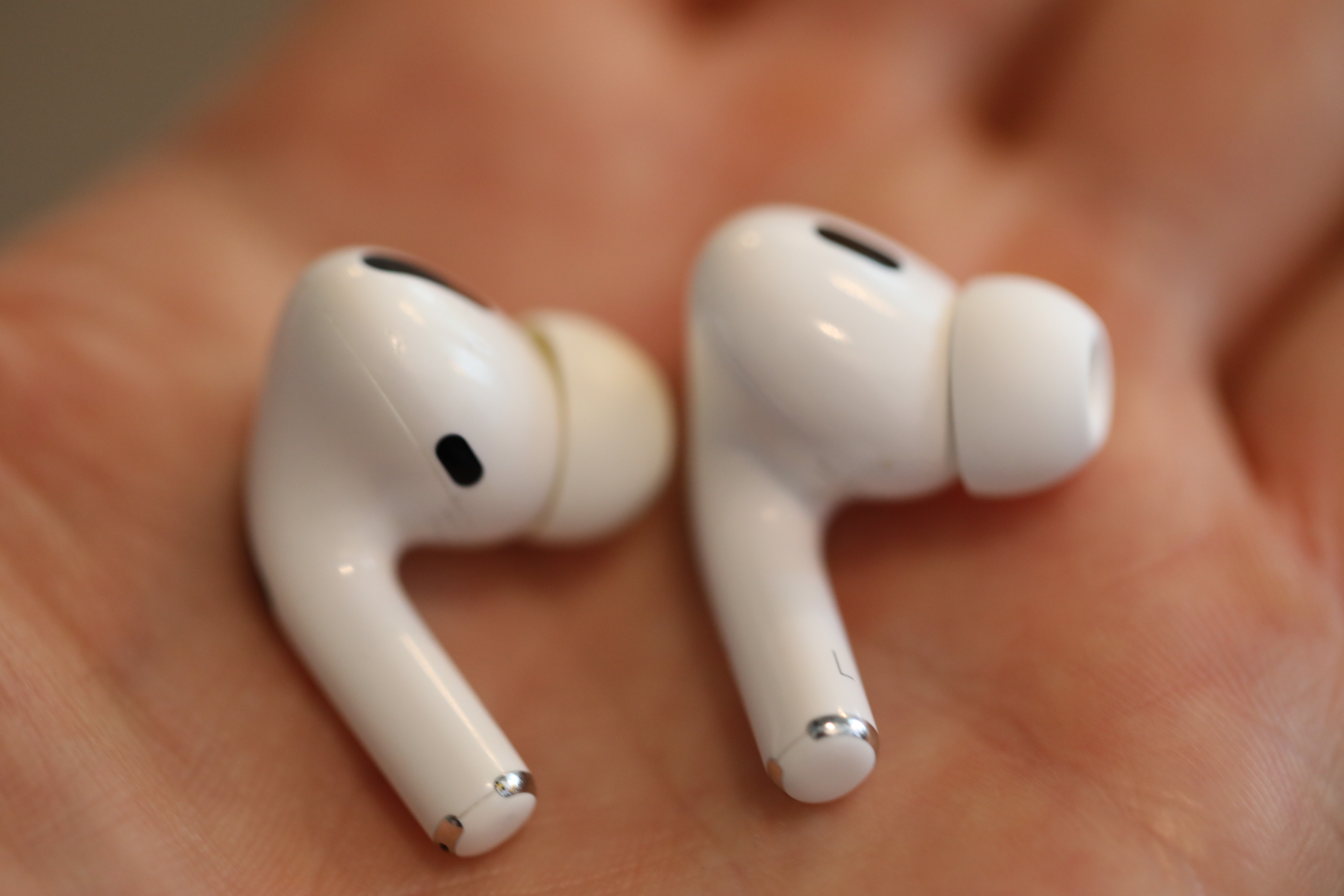
Left: Pro Gen 1, Right: Gen 2. Image Credits: Brian Heater
In recent years, when people ask me which earbuds to get, I recommend going with the same company that made their phone. Much like flagship smartphones, premium earbuds are mostly pretty good across the board — it’s remarkable, really, how quickly the category matured. Device manufacturers design headphones to work with their smartphones. The rule goes double for Apple. The company makes its own software, hardware and the chips that go inside of it.
Of course, pretty much any Bluetooth earbud can be manually paired to any modern smartphone, but by doing so you’ll miss out on some of the software perks — including, in most cases, the pairing itself. It follows, then, that if you’re an iPhone owner, you’re best served buying Apple headphones. The pertinent question, however, is which pair. As discussed in my Watch SE writeup, choice is important, particularly in the wearables space. While the company has expanded its smartwatch offering in recent years, however, it still can’t touch its headphone offering.
The AirPods line is effectively comprised of three different models: the (relatively) budget AirPods, the premium AirPods Pro and the over ear AirPods Max. A slightly complicated and otherwise straightforward offering is Apple’s decision to keep the 2nd Gen AirPods around alongside the 3rd — the $40 gulf between the two includes things like a hardware redesign, Spatial Audio and extra battery life. Complicating things further is Apple’s 2014 acquisition of Beats, which brings some really solid alternatives to the table. I’m partial to the Fit Pro for workouts.
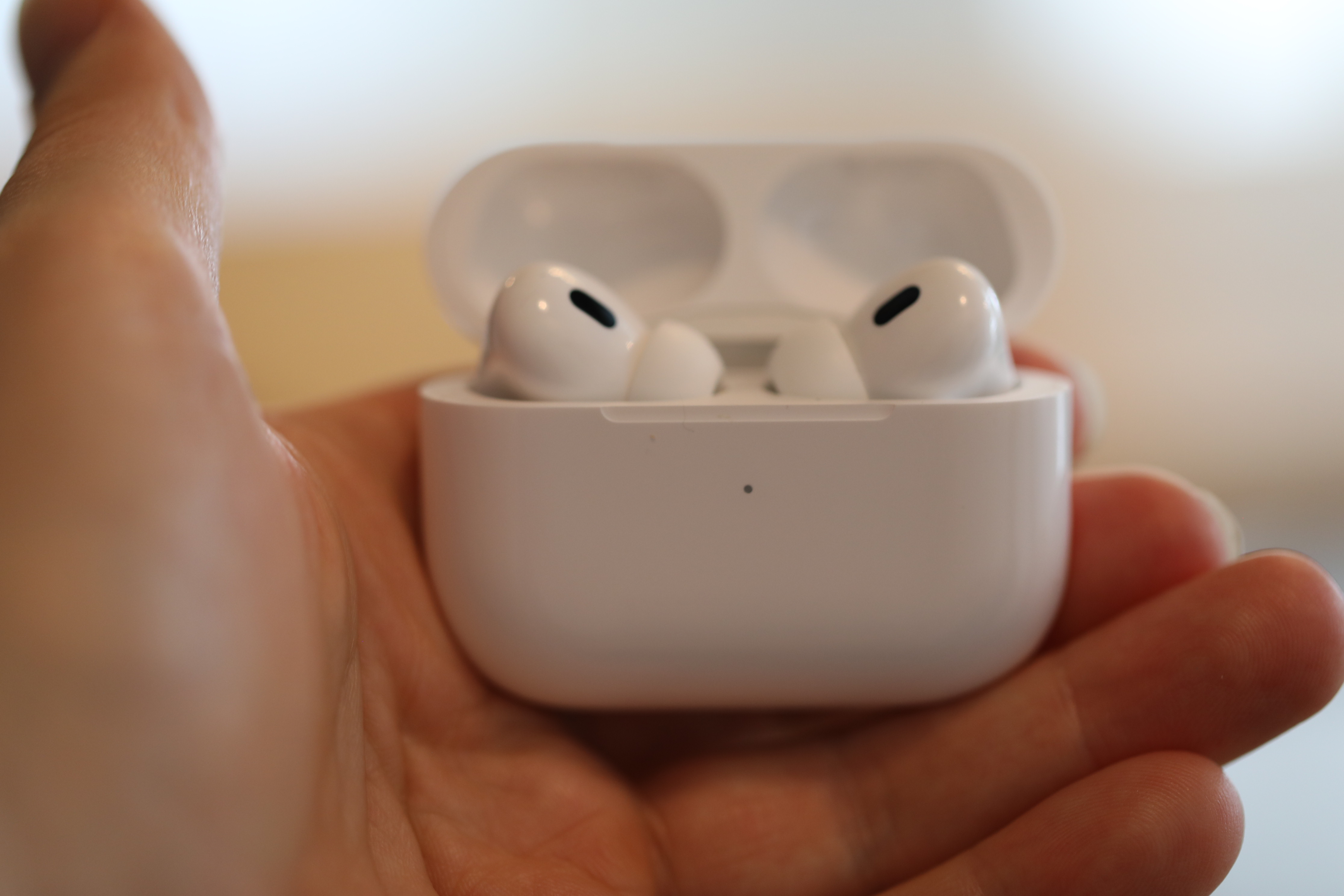
Image Credits: Brian Heater
The gulf between the 3rd Gen AirPods and the 2nd Gen Pros are double that of the lower end of the line. Of course, the $80 price premium amounts to a lot here. At $249, the Pros are pricey — but it’s a cost that comes with a number of truly premium upgrades over their predecessors. As with the original Pros introduced all the way back in 2019, the 2nd Gen Pros are considerably more comfortable than the standard AirPods, sound better, feature both active noise canceling and transparency and come in a case that supports wireless charging.
This year’s models improve upon their predecessors in a number of important ways, including sound and noise canceling and the addition of personalized Spatial Audio and adaptative transparency mode. The case arguably brings even more to the table, with the addition of speakers to chime when they go missing, a built-in lanyard loop (okay, this one’s less exciting that it is useful) and expansion of wireless charging functionality to include the Apple Watch’s charger (fewer cables is always better when you’re traveling).
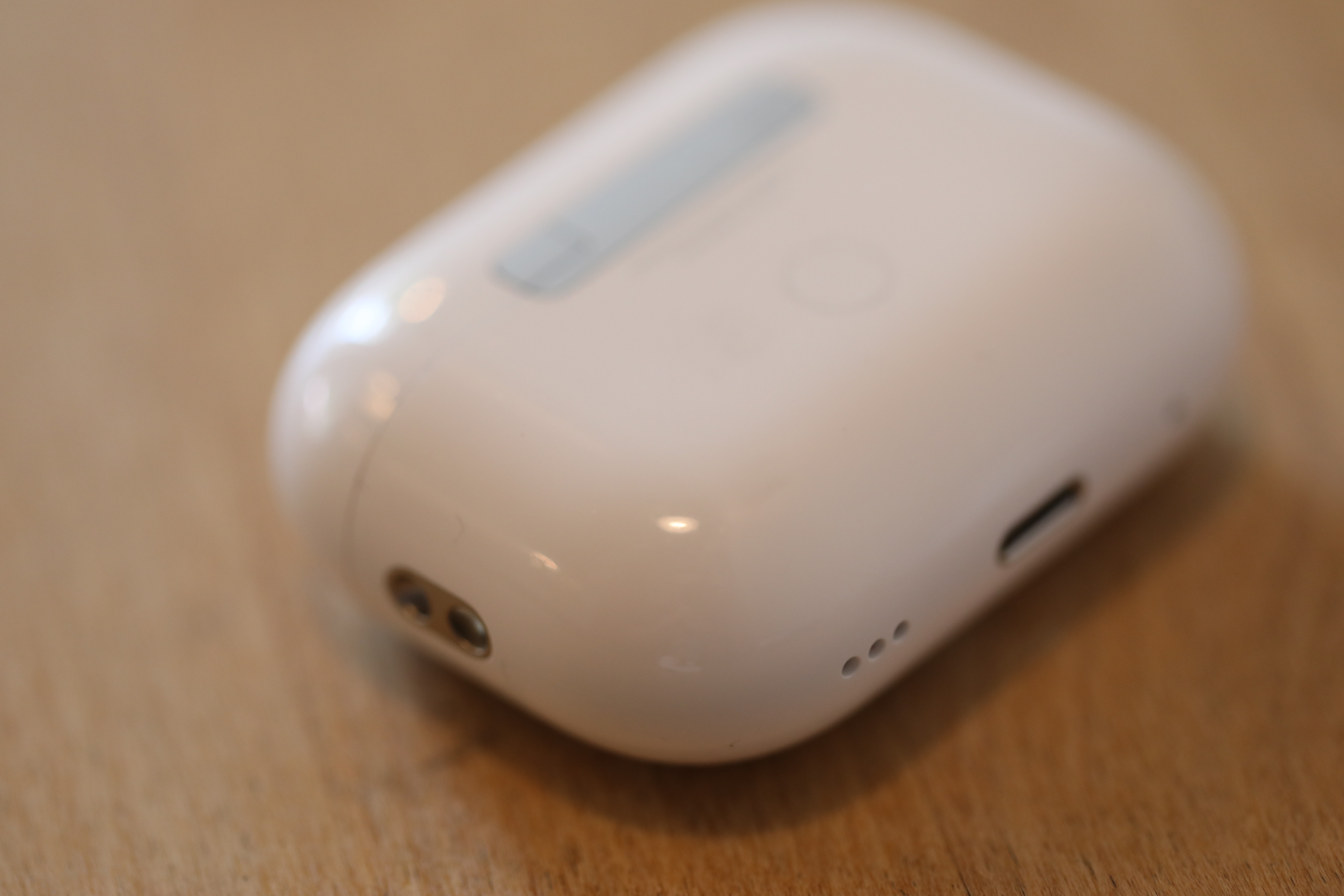
Image Credits: Brian Heater
I won’t go so far as saying this is anywhere approaching a necessary upgrade if you have a still-working pair of the Gen 1 buds, but it certainly keeps the Pros in strong contention for the top spot among all wireless earbuds. I hesitate to give any single pair the title of “best buds,” as this is a field-wide range of different preferences. Sound quality is subjective and comfort even more so. I will say, however, that the new Pros hit it out of the park for me on both counts.
The design changes seem minor, save for the couple of updates to the case. The most obvious difference on the buds themselves is a refinement to the microphone array used for things like ambient sound detection, wind blocking and noise canceling. The biggest hardware change to the buds themselves is also the most welcome. The stem-squeezing interface presents some clear limitations. Chief among them is the ability to adjust volume. Imagine the nightmare of trying to execute that with a series of clicks.

Image Credits: Brian Heater
Instead, a small, touch-sensitive slider has been added to the stems. Rather than a contiguous slide interface, it’s designed to do one level at a time to avoid accidentally cranking up the sound up. I like the feature in principle, though the execution is a bit flawed. The spot is slim and located right next to your face, which makes it a bit tricky to execute a proper slide — especially if you’re attempting to do so while running. Depending on how you wear your AirPods, you may find the new interface more or less navigable.
The buds stay in place well while walking. Running for the most part, too, though I found myself having to adjust them a fair bit to keep the seal when the sweat really started flowing. Again, the Beats Fit Pro remain my gold standard if workouts are your primary use case.
There have been a few subtle changes to the buds’ ergonomics, along with the replaceable silicone tips (the of the major improvements over the standard buds, in terms of sheer comfort). The medium tips worked well for me (there’s a new extra small version, as well), forming a nice seal and sitting comfortably in the ear for long stretches.
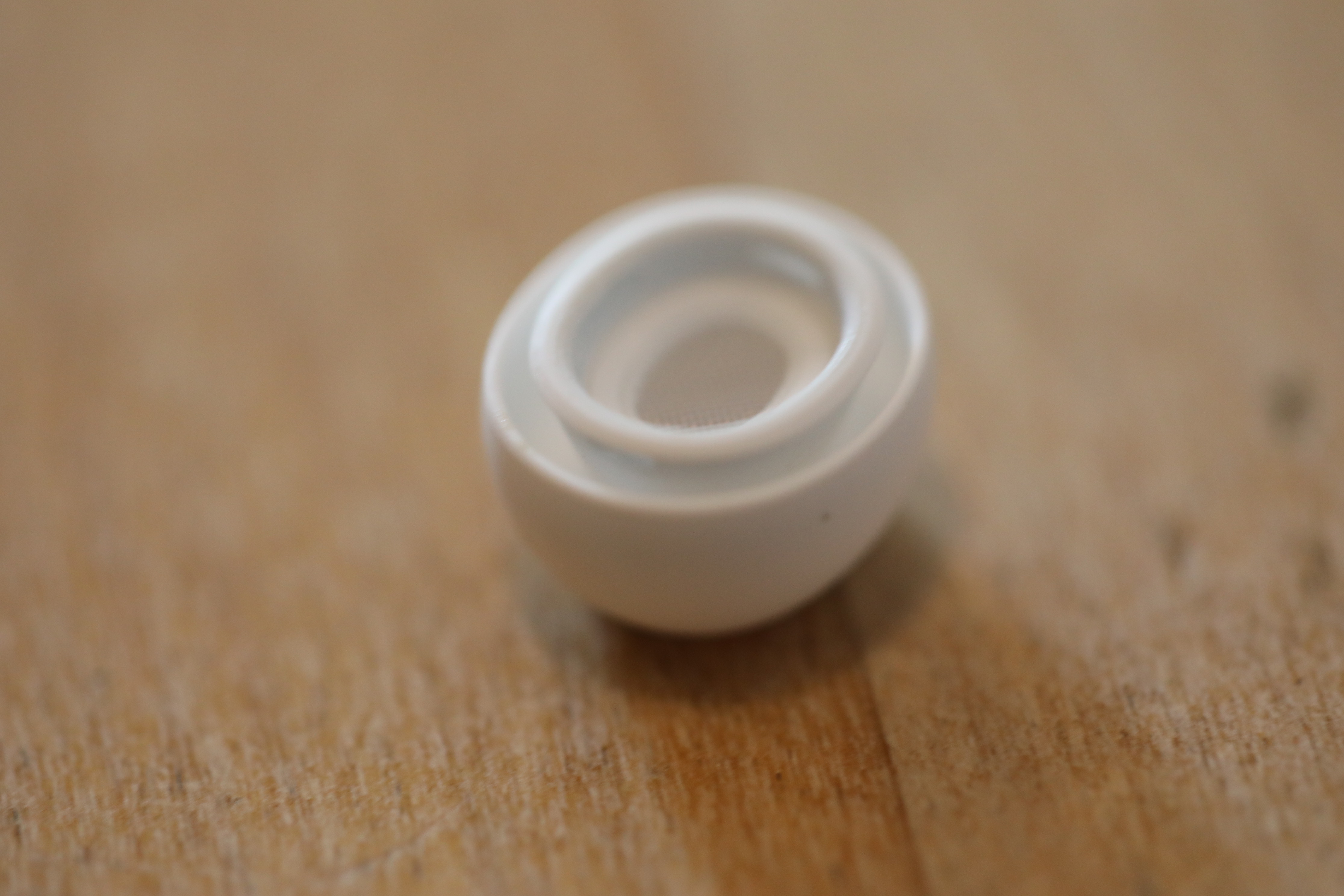
Image Credits: Brian Heater
AirPods have long been at the forefront of a push to normalize keeping headphones in one’s ear all day. Comfort is a huge part of that, along with the stated six hours of battery life. For better or worse, they’ve seemingly made it more socially acceptable to carry out on a conversation with buds in (even before our social norms went to hell during the pandemic). Please, though, remove them when talking to the cashier at the supermarket. A little recognition of someone’s humanity goes a long way.
The addition of adaptive transparency helps further push the buds in that direction. Specifically, the company is suggesting that they could serve as a replacement for earbuds in high noise environments. Quoting from the CDC here, “A whisper is about 30 dB, normal conversation is about 60 dB, and a motorcycle engine running is about 95 dB. Noise above 70 dB over a prolonged period of time may start to damage your hearing. Loud noise above 120 dB can cause immediate harm to your ears.”
There’s an interesting solution here, when you pair the new buds with the Apple Watch’s noise app. The later gives you a read of ambient sound levels, sending you an alert when you cross a specific threshold. Toss the AirPods in with adaptive transparency on, and it will give you an estimate of the overall sound reduction. Effectively, the adaptive noise cancelling works by bringing loud sounds down to a more reasonable 80 dB. Apple has suggested people leave their AirPods in at a concert to save from potential hearing damage.
I believe we’re far away from it becoming socially acceptable to have AirPods in your ears at a concert. I couldn’t bring myself to do it at the Voxtrot reunion show last week. Maybe a few brave souls can change that — or perhaps wearing headphones at a rock show will always be a social faux pas.
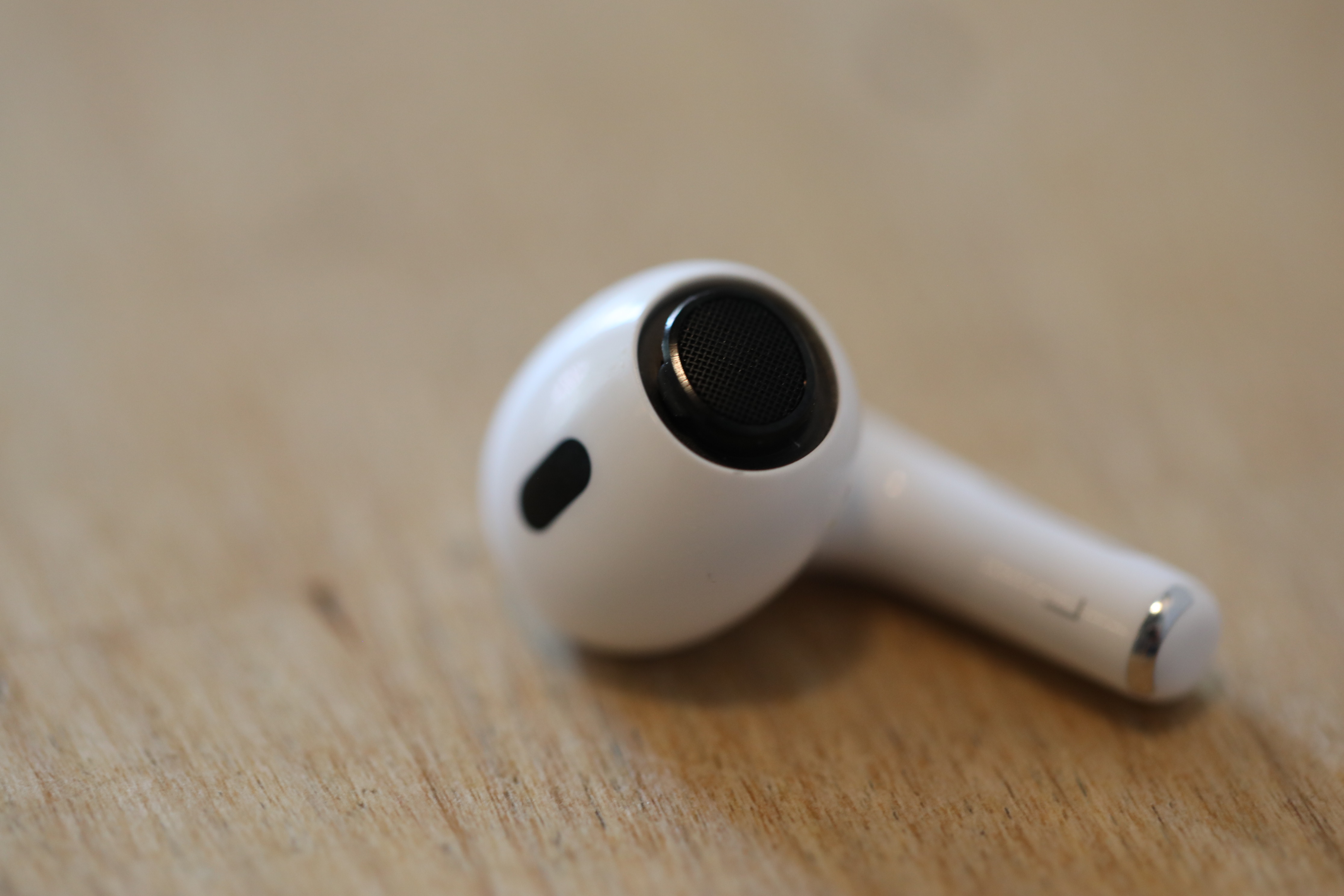
Image Credits: Brian Heater
The strongest experience I had on the noise canceling front was the flight home from Apple’s Far Out event. It’s one of those hearing is believing deals. Once the buds are firmly in place, there’s an almost vacuum effect that happens as the plane noise vanishes. If you’re looking for buds that will remove ambient noise completely, the buds aren’t them. I prefer something like Sony’s LinkBuds S, which offer an additional passive noise canceling element into the mix, due to their hardware design (they also rival the Pros in terms of comfort).
The effect is more subtle here. On my five-mile Saturday, for example, they didn’t cut out the sound of the Queens above-ground subway line completely. Rather, even in noise canceling mode, they leave you aware of your surroundings — something that’s probably a positive while walking through New York City. When meditating at the gym in the morning, however, I prefer being blocked off from the bad electronic music over the PA and the sounds of weight trainers slamming down barbells.
Apple’s goal is to remove as much ambient sound as possible with the noise canceling feature. That works in places like airplanes where the goal is removing all noise. Adaptive transparency, on the other hand, is designed to keep you aware of your surroundings, while protecting you from unexpected loud noises, like, say, a subway train or garbage truck.
You certainly can’t argue with the sound quality here. I mean, you can — and I did suggest that it’s subjective earlier — but for my money, Apple makes a strong case here for the best-sounding buds, whether you’re listening to music or podcasts. The balance is excellent and the sound is crisp and full. There’s none of the overreliance on bass that you get with some headphones — though the deep low-end is there when you need it.
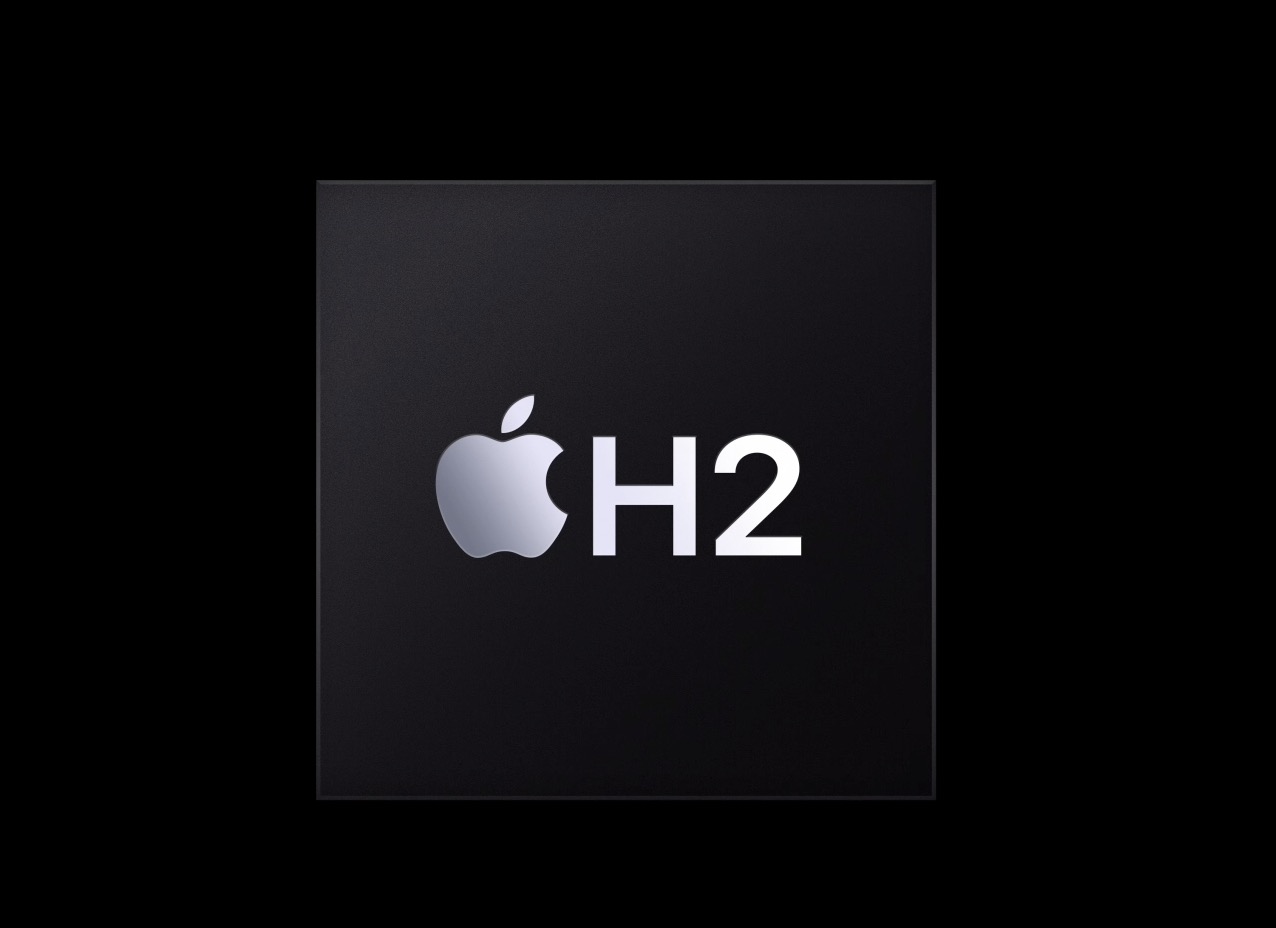
Image Credits: Apple
Much of the improvements to sound, noise cancelling and transparency come courtesy of H2. The 2nd Gen Pros are the first AirPods to sport the new silicone, which Apple says doubles the H1’s transistor, to more than one billion. The company notes:
The brand-new H2 chip carries out more functions than ever, using computational algorithms to deliver even smarter noise cancellation, superior three-dimensional sound, and more efficient battery life — all at once.
That includes Spatial Audio. Apple’s been pushing the feature for a while now, though this time out it gets a brand new setup process in the iPhone’s settings menu along with the standard ear tip fit offering. The customizable version of Spatial Audio features a setup process similar to that of Face ID. It will walk you through the process of identifying your ear shapes to offer a better experience.
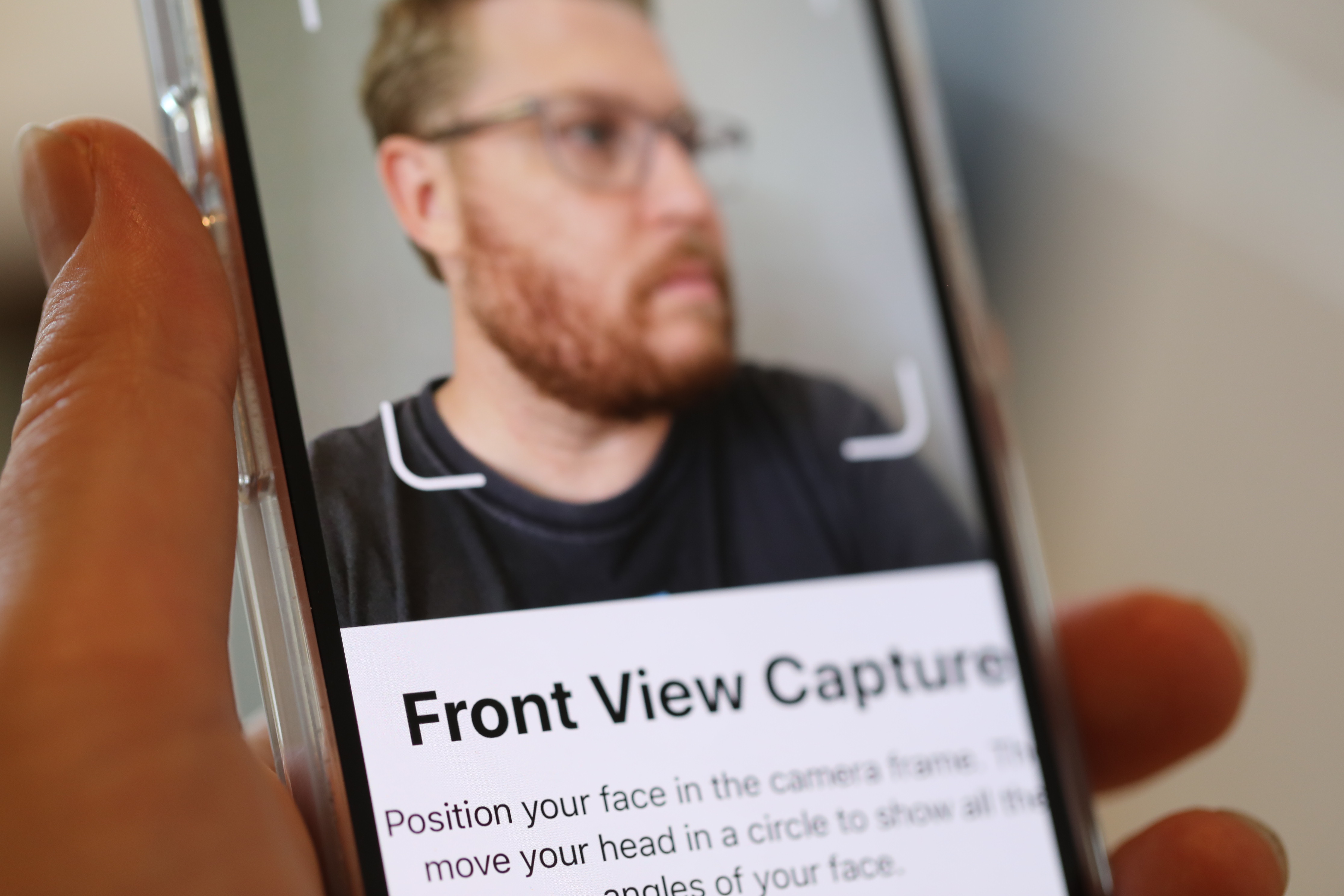
Image Credits: Brian Heater
I will come right out and say that I’m still not sold on Spatial Audio. It’s a novel experience for things like Apple TV and Music, mimicking the effect of a real-world sound source. Rarely, however, do I find that it does much to enhance the experience of music listening. Instead, I’ve been long convinced that Apple is working to lay the groundwork for a fuller mixed reality experience — and a number of companies have joined that cause.
What the new Pros don’t offer, however, is high-res audio. While Apple Music supports lossless audio via the ALAC codec, the company believes that — despite claims from companies like Samsung and Sony — the current Bluetooth standard isn’t capable of delivering a consistently good experience. I will say, I do believe the Pros’ audio experience as it currently stands will be plenty good enough for most people in most situations.
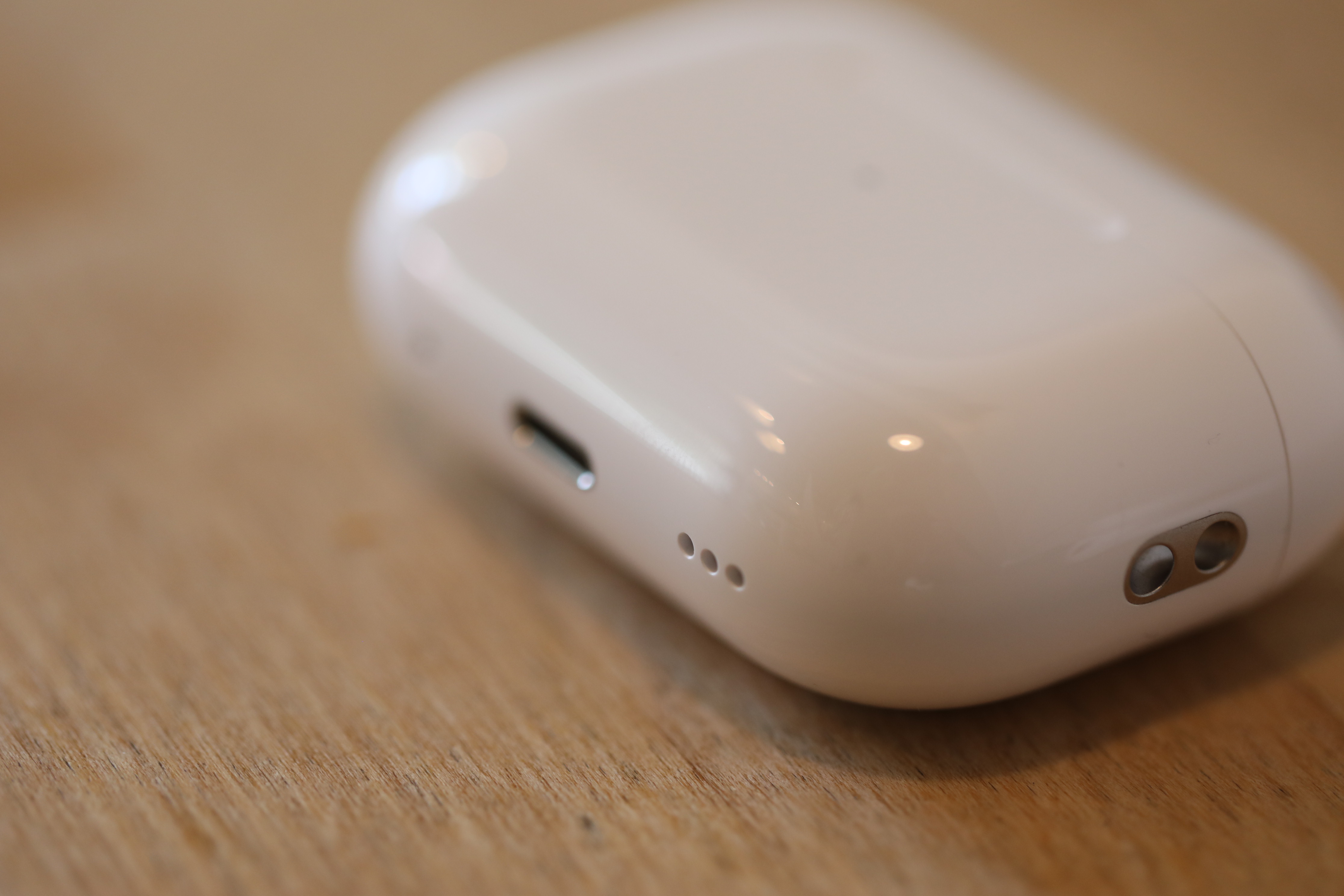
Image Credits: Brian Heater
The most welcome change of all just might be the speakers on the charging case. The three small holes to the side of the Lightning port bring some cool functionality. For starters, you get a single note chime when charging starts and another when it hits 100%. The biggest trick, however, is the ability to play a sound when attempting to locate a lost case. The buds were already able to do so, because they — obviously — have their own built-in speakers.

Image Credits: Brian Heater
If your case went missing, however, your fortunes were left entirely to the AR Find My app, which sometimes falls short in close quarters. Now each bud and the case can send out a sound, individually. Fair warning, it’s high-pitched and downright ear-piecing (out of necessity). I just fired it up and my ears are still ringing (my rabbit is very much not a fan). Hit Play Sound in the app and you get a series of six beeps, played three times. It’s extremely handy and arguably the best new feature.
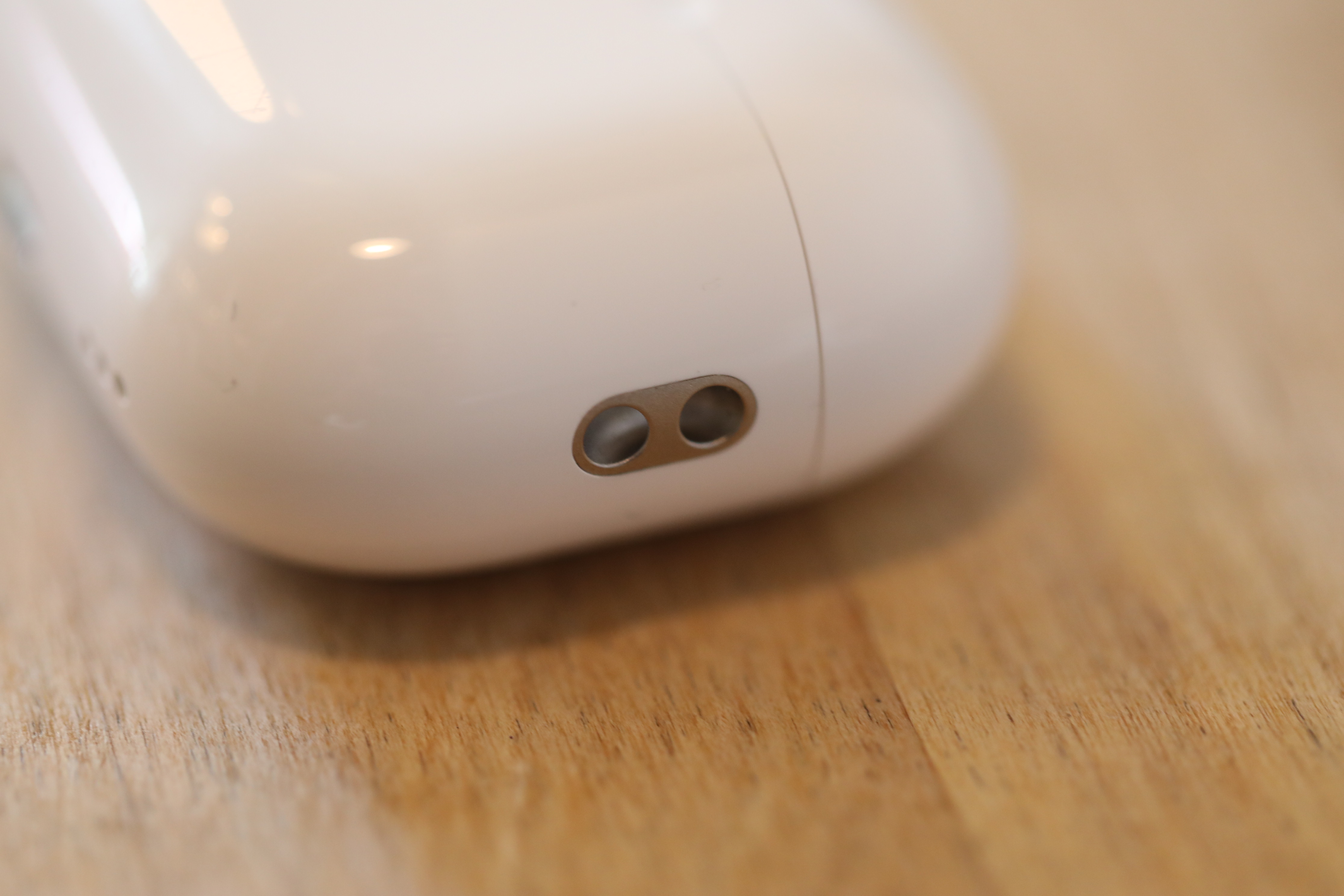
The case offers four additional charges, bringing the combination up to a stated 30 hours of life — six more than their predecessors. Even with the H2 chip, I did run into the occasional connection issue — though thus far it’s nothing that turning Bluetooth on and off again can’t fix. The buds and case are rated IPX4, which means sweat and the occasional downpour won’t be an issue, but don’t like, wear them swimming or anything.
Overall, the new Pros are, again, excellent. Some really welcome additions to one of the best pair of earbuds out there. At $249, the pricing is a bit steep, but these are a pair of headphones you’ll want with you for the long haul.
AirPods Pro (2nd Gen) review: Welcome updates to Apple’s best buds by Brian Heater originally published on TechCrunch








